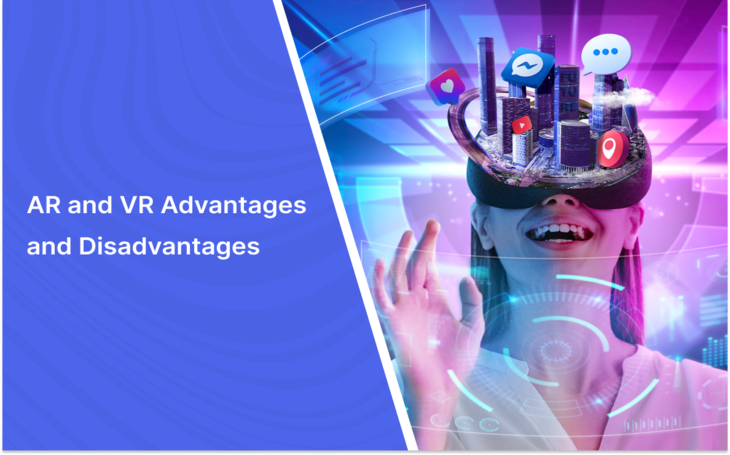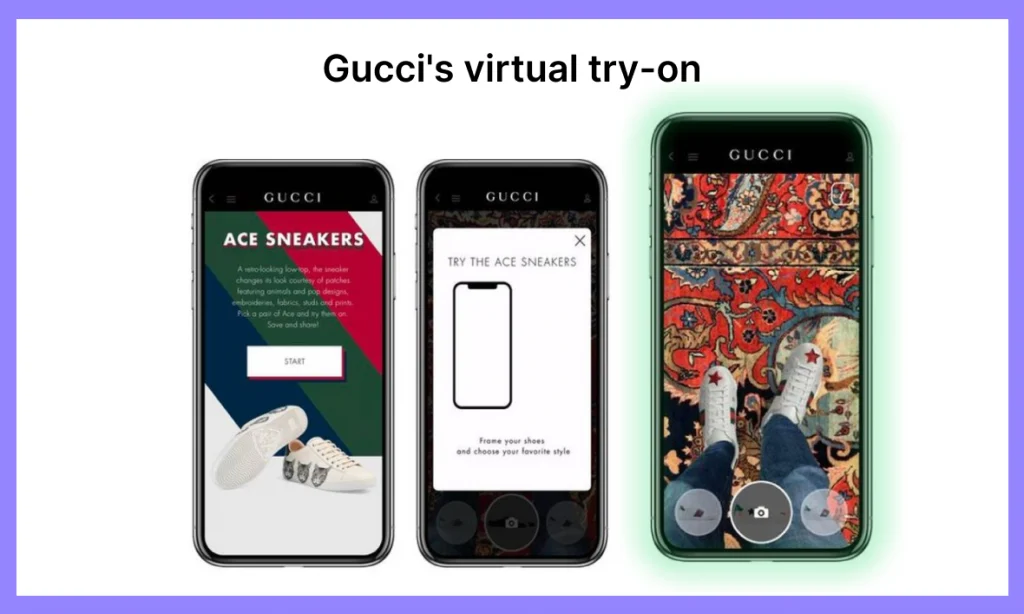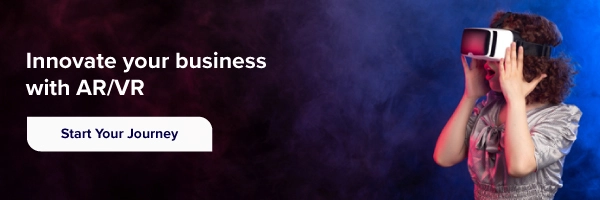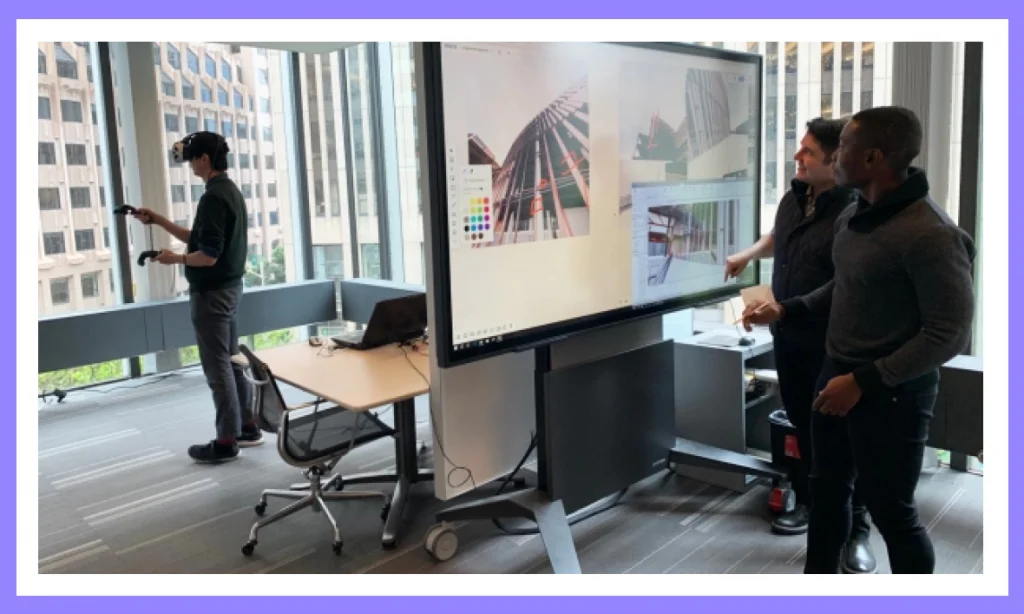
Though the terms Augmented reality and Virtual reality are often used interchangeably, there is a huge difference between the two. So, this blog will give you a comprehensive idea about the advantages and disadvantages of AR/VR. Both technologies create immersive and interactive world experiences by creating a simulated environment you can interact with.
Research studies from Statista say that the revenue in AR/VR market is projected to grow by USD 52.05 billion by 2027. From these numbers, you get an idea that the AR/VR industry has vast business potential.

So, if you are lost in the world of AR or VR, this blog gives you everything you need. In this blog, we will look at what AR and VR are and explore AR and VR advantages and disadvantages.
What is AR?
Augmented reality, aka AR, integrates the physical and virtual worlds. Augmented comes from the Latin word “augere,” meaning to add or increase. It is an enhanced version of the physical world which means adding digital content to your physical world.
AR is one of the most exciting technologies, which brings a digital object into the physical world. The digital objects are merely computer-generated content which can be anything, including video, 3D models, dynamic web content, etc.
Users can enjoy immersive experiences using smartphones, tablets, smart glasses, and headsets.
You can find many AR applications in the real world, from marketing and manufacturing to training and logistics. Thus, AR technology enhances the experience of the real world by placing virtual images in the person’s work setting.
Advantages of AR
Let’s walk through some of these AR advantages-
1. Enhances Customer Experience
AR is changing the way customer interactions took place earlier. With the advent of AR technology, AR sellers allow customers to interact with virtual elements in real time. It means that users can point their phones toward a certain object, say a building and the app overlays digital information on top of the physical world.
Furthermore, AR provides a try-before-you-buy opportunity wherein customers can virtually try on things.
Let’s understand this with an example –

Gucci’s virtual try-on feature lets the shoppers make more informed decisions for products such as shoes, furnishings, and cosmetics and test them in real-time. Thus, it’s a win-win strategy for shoppers and Gucci as Shoppers can try virtual sneakers in real time and avoid additional store visits.
2. Increased Engagement
One of the most prominent advantages of AR is that it drives customer engagement. More importantly, today’s customers prefer to buy from brands they feel connected to. AR increases customer engagement as it keeps customers engrossed in your products.
By leveraging AR in your business, you can interact with digital content and create an engaging experience for users, which is more than just viewing the screen.
For Instance – If you are looking online for a new sofa, but the site comes up, you are unsure which piece of furniture would fit in your space. This app has an AR visualizer tool that lets you try the sofa in your living room through the smartphone camera.
Would you engage with it?
Yes, you will engage with this site because it increases your confidence and builds an emotional connection between you and the brand.
3. Competitive Differentiation
Implementing AR in your business operations can give you a competitive advantage. If various brands offer homogenous products at similar rates, then it’s high time for you to set yourself apart from the crowd.
AR helps you position your business differently as it allows you to connect with customers, provide unique experiences, and make your brand memorable.
For Example – As you know, the sportswear market is already crowded, and Nike took the first mover advantage by leveraging AR in their business processes.
By stepping shoes in the AR world, Nike is now considered a premium player in the industry. The brand knows how difficult it is for shoppers to find shoes that match their physical size.

So, Nike developed an AR tool that lets customers try and buy the sneakers and get the exact shoe size they are looking for.
4. Immersive Training
Every organization thinks of making its employees a better resource by providing intensive training. But many organizations don’t have a big budget to arrange practical training for employees.
For Example – When it comes to training employees in the manufacturing sector, organizations need to have enough funds to conduct training to improve the workforce’s productivity.
With AR solutions, you can improve the workforce’s skills as you don’t need massive equipment and a high budget.
Employees can visualize and attend their training modules, and on the other hand, organizations can use interactive AR-based evaluation modules to measure the effectiveness of training modules.
Thus, AR enables organizations to provide immersive training to their employees.
Also Read: Cost To Develop An AR App
Disadvantages of AR
Here are some disadvantages of AR-
1. Expensive
AR projects and apps are expensive as they require substantial investment in research, development, and infrastructure.
Developing a simple AR app cost around $10,000 – $50,000. However, the overall cost depends on the complexity of the app and customer requirements.
Therefore, an increasing development cost reduces the widespread adoption of AR devices.
2. Health and Safety Concerns
Several research studies suggest that overuse of AR technology negatively impacts your health, including eye issues, a state of mental dependence, and ear problems.
The younger generation is increasingly becoming addicted to AR devices, and such immersive experiences might lead to an increase in accidents, especially if users are unaware of their physical surroundings.
3. Hacker Attacks
Another disadvantage of AR is that it exposes individuals to several cyber-attacks and various security threats.
For Instance – Using an AR-enabled navigation system, hackers can misdirect your vehicle to cause an accident.

What is VR?
Virtual reality simulates the environment, and users can interact with objects and feel as if they are physically present in that virtual environment.
Users can experience a virtual environment with the help of head-mounted displays. This technology makes you feel that you are in a different place, say a beach, even if you are physically present in your living room.
Virtual reality is used in various fields, such as entertainment, education, medicine, gaming, etc. VR differs from AR as it places the user in a virtual environment. If you want to experience VR to its full potential, you can wear gloves or a suit with special sensors.
For Example – IKEA launched a virtual reality campaign allowing customers to plan their home décor and showcase a range of IKEA’s furniture products.

Here, customers can see the 360-degree view of the virtual room using VR headsets. Thus, users can design virtual rooms and see their appearance in real-time. More importantly, the new experience is immersive, and users can freely move around the room and interact with objects.
Advantages of VR
Let’s walk through some of these VR advantages-
1. Revolutionizes The Try-Before-You Product
In the online world, it becomes difficult for companies to provide an experience where they can try out the products before making a purchase.
With the implementation of VR, customers get a chance to try out the products before they buy. VR expands the concept of trying before you buy, providing customers with unique product experiences.
For Example – Volvo offers a VR test drive before you buy the car. Anyone can book this VR experience and get a taste before purchasing. All you need to do is have a Volvo reality app and feel the immersive experience it offers.
2. Introduces Established Products To New Audiences
Bringing product presentation to a new level is another brand-new advantage of VR. It’s a great way to showcase products to potential customers and provides an interactive shopping experience.
By doing so, brands build an emotional connection with customers, and customers get the advantage of consuming content in an immersive environment.
For Instance – Patril Taquila provides an Oculus VR experience wherein the company created a new marketing project and provides a 360-degree experience of the product to show the art and craft behind patron.
3. Learning Becomes Fun With VR
Another biggest benefit of VR is that it was difficult for students to understand STEM subjects earlier.
Virtual reality makes dry and abstract concepts more entertaining and appealing for students. It adds value to learning processes by changing the way students learn the subjects of arts and humanities.
For Instance – Students can see and understand the subjects more deeply when they are transported to the streets of Rome with the click of a button. They can understand the subjects more deeply as they are immersed in virtual settings.
4. Effective Prototyping
A few years back, developing products from ideation to prototyping was time-consuming and expensive. As virtual technology emerges, businesses can prototype and test the products cheaper and faster than ever.
They can take product prototyping to a whole new level by creating, reviewing, and modifying 3D models in an immersive environment. Thus, it reduces the need for physical prototypes.
Disadvantages of VR
Here are some disadvantages of VR-
1. Implementation is Expensive
With the introduction of this emerging technology comes the cost as well. Those who cannot afford this technology are left out of using it. Moreover, ongoing upgrades and maintenance add to the overall cost of development.
2. Health Risks
Despite so many advantages of VR technology, VR headsets are affecting the health of users because prolonged use of headsets causes various health issues, including eye strains, headaches, and nausea.
When you are in the virtual world, it’s difficult for your brain to understand what’s real and what’s not.
3. Social Isolation
People are becoming isolated because they are so involved in virtual reality that they are losing touch with the real world. There comes a situation when people become used to spending more time in the virtual world than with people in the real world.
Wrapping Up
Augmented and virtual reality are the 2 cutting-edge technologies that offer untapped potential to businesses and individuals.
Undoubtedly, each technology has its pros and cons. Before investing in these technologies, it’s crucial for you to compare the AR and VR Advantages and Disadvantages.
As an AR/VR app development company, we know how important it is for you to leverage these technologies and get value out of them. Moreover, we have a dedicated team of AR/VR experts ready to take your business to the next level through AR/VR solutions.
Do you need help creating a digital world that your customers love to interact with?
Then, contact our AR/VR experts now, and we will help you prepare for the near future.




